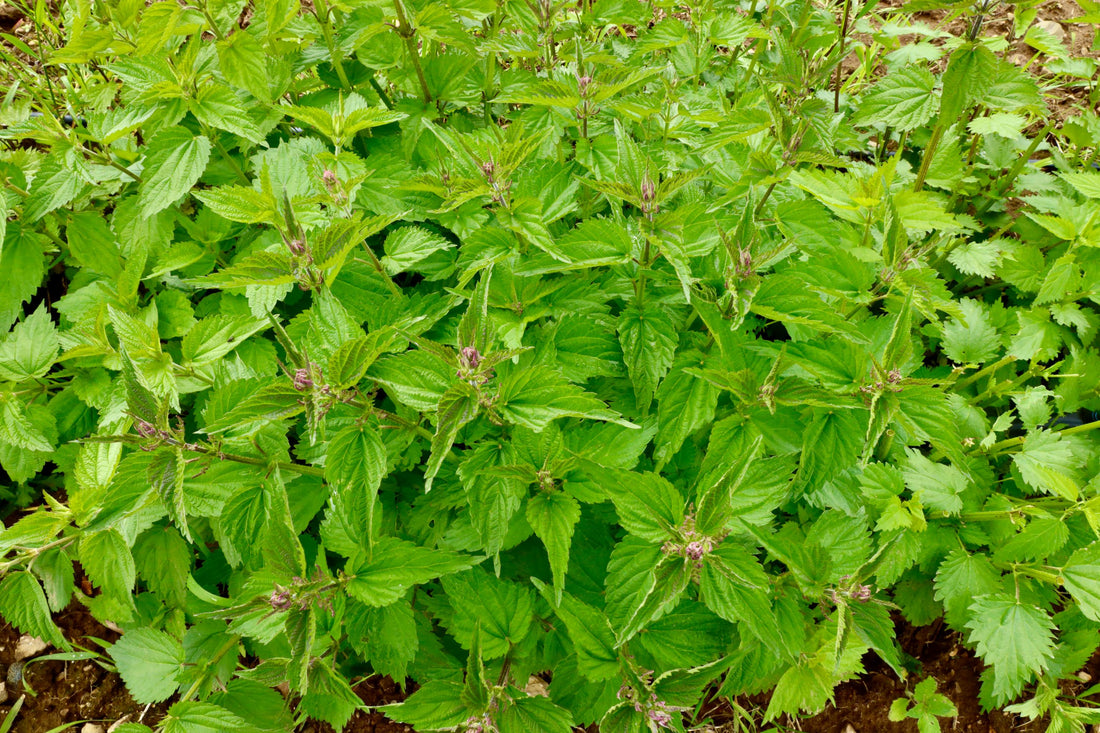
Nettle Seed: Growing, Harvesting, and Loving the Plant Behind the Sting
If you garden, you may know nettle as a weed—and a nasty one at that. Its sting, in its name often referred to as stinging nettle, gives away the culprit. But behind the sting lies one of the most nutritious and medicinal plants we grow here at La Ferme À Ciel Sur Mer, starting from something tiny and full of promise: the nettle seed.
We specialize in botanicals and medicinal herbs, and we’ve learned to see “weeds” differently. The mighty wormwood, whose deep taproot defies even the most determined gardener. Dandelion, whose cheerful yellow blooms are the nemesis of a perfectly manicured lawn. And of course, stinging nettle—a plant that grows vigorously on the edges of our fields, always ready to spread its kingdom by casting out millions of small nettle seeds.
If you’d like to experience the benefits of this powerhouse herb for yourself, you can find our Organic Nettle ready for tea, infusions, and more.
What Is Nettle?
The nettle plant (Urtica dioica) has a long history in herbal medicine and cuisine. Rich in vitamins, minerals, and chlorophyll, nettle has been used for everything from teas and soups to herbal remedies for joint pain and allergies. But the journey starts with a stinging nettle seed, tiny yet capable of producing a hardy plant that can nourish, heal, and support pollinators.
Curious about the surprising history and uses of nettle? Check out our blog post: Facts About Nettle You May Not Know.
Nettle Meaning
Historically, nettle’s meaning has been one of resilience and vitality. In folklore, it represents protection—often planted near homes to ward off evil. For herbalists and growers, nettle seed means possibility: the start of a plant that can feed both body and soil. For gardeners, it sometimes means trouble, because once nettle drops seed, it can spread widely.
Nettle Look-Alikes
When working with nettle seed or identifying plants in the wild, it’s important to know there are nettle look-alikes. The most common is dead nettle (Lamium album), which shares the serrated leaf shape but lacks the sting. While dead nettle is edible and medicinal in its own right, it’s important to identify your plants correctly—especially if you plan to collect or sow seed.
Stinging Nettle Growing from Seed
Here’s the irony: many gardeners spend their lives trying to eradicate nettle, but when you actually want to grow it, stinging nettle growing from seed can be surprisingly finicky. On our farm, nettle thrives along the forest edge without a care, but plant it in neat rows and it suddenly becomes fussy. Too much sun, not enough moisture, or competition from more aggressive plants can slow its growth.
We’ve learned that stinging nettle seed prefers rich, moist soil and partial shade—conditions similar to its natural habitat. Germination is more reliable when started indoors and transplanted once the soil warms. If direct sowing, keep the soil consistently moist until seedlings establish.
If you’d rather skip the growing stage and go straight to enjoying the benefits, you can shop our Organic Nettle, hand-harvested and full of vibrant green goodness.
Why We Grow Nettle from Seed Anyway
Friends and customers laughed when they heard we were growing stinging nettle from seed.
“You’re growing what? Are you mad?”
“You can’t get rid of it at my place —why can’t you grow it there?”
But for us, starting from nettle seed is worth the trouble. It’s a powerhouse herb, an early spring green, a pollinator plant, and an important part of our herbal tea blends. Where’s the fun in being normal anyway?

Interested in knowing more about what's going on on the farm? Our occasional emails bring you stories from the field, new herbs for sale, and herbal insights.
🌱 Browse our Organic herbs or Sign up for our newsletter to stay connected.